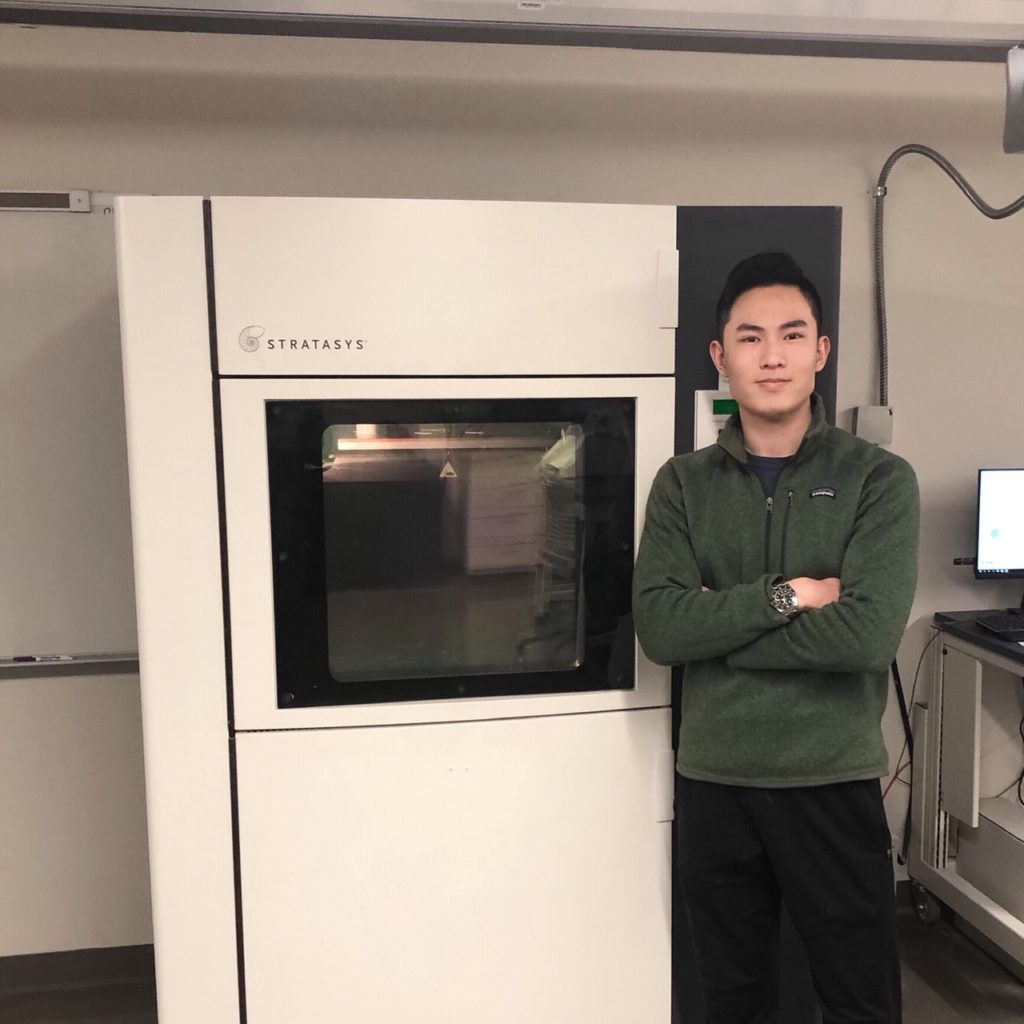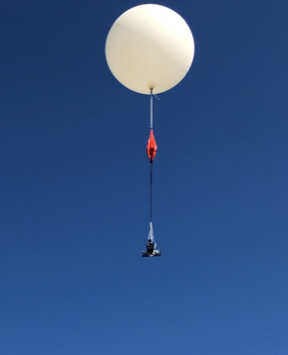“As part of our development towards a 3D printed stratospheric satellite and 3D printing CubeSats, we recently launched a small prototype consisting of a CubeSat, a truss, and an engine frame with twin solar-powered drone motors to an altitude of 27 kilometers. All the components were 3D printed out of common thermoplastic polymers ABS and ASA, with the exception of the solar-powered motor and onboard electronics and parachute,” said Ge. “The flight lasted a total of six hours, with our experimental motor nearly doubling the flight time of the balloon. We intend to perform another launch in April using a prototype altitude control system with the aim of having the stratospheric satellite remain aloft for 24 hours straight.”
Ge, who acts as both CFO and CEO of the company, indicated that “these machines give us a massive range of materials to work with but at the moment we primarily use parts made from Polycarbonate, thermoplastic polymers ABS (Acrylonitrile butadiene styrene) and ASA (Acrylonitrile butadiene styrene), and are even experimenting with Nylon powder and laser printing.”
In the early months of the company, they experimented with 3D printed rockets before deciding that it just wasn’t feasible to develop a true launch system with the resources and budget at hand. At the time, the plan was to crowdfund the development of a 3D printed sounding rocket comparable to the ones Black Brant used by NASA or rockets from Up Aerospace for an estimated program cost of $40,000. Ge does not exclude working with rockets in the future, he considers that there is still an experimental 3D printed composite rocket motor on the drawing board, but the majority of the work has pivoted towards stratospheric satellites since it will take a lower cost to commercialize.
“We plan on launching a crowdfunding campaign soon, once our weather balloon altitude control valve goes past the prototype stage which should be around April. During the summer months of June and July, the plan is to begin pitching to venture capital companies in the Midwest or go back to our plan of crowdfunding development with tangible prototypes and successful flights under our belt,” explained Ge. “However, we know that crowdfunding is fickle, and would only use it to generate a surplus for us to pursue stretch goals such as upscaling the stratospheric satellites or resuming development of a high altitude launch vehicle. On the technical side, our plan is to have regular flights every two to three weeks on weather balloons to flesh out the altitude control system and engine work.”
“The ultimate goal of Stratodyne is to make space something that is accessible to, not just big corporations or governments, but to your average High School student or the typical guy you’d find on the street. It might sound like a cliché – and it is since every startup says that – but it’s something that needs to happen if we are ever going to be a truly spacefaring species and that’s one goal we can all believe in,” concluded Ge.
Subscribe to Our Email Newsletter
Stay up-to-date on all the latest news from the 3D printing industry and receive information and offers from third party vendors.
Print Services
Upload your 3D Models and get them printed quickly and efficiently.
You May Also Like
Nikon SLM Solutions Sells SLM 500 to Primary Weapon Systems to Expand Suppressor Production
Primary Weapons Systems (PWS) is a Boise, Idaho-based manufacturer of suppressors, firearms, and related components. A subsidiary of Vigilant Gear and a sister company to aftermarket Glock slide manufacturer Lone...
3DPOD 261: Tooling and Cooling for AM with Jason Murphy, NXC MFG
Jason Murphy´s NXC MFG (Next Chapter Manufacturing) is not a generalist service; instead, the company specializes in making tooling. Using LPBF and binder jet, the company produces some of the...
HP and Firestorm Labs Form Partnership to Use Multi Jet Fusion 3D Printers in Deployable Factories
HP Inc., maker of a range of additive manufacturing (AM) solutions including the Multi Jet Fusion (MJF) ecosystem, has announced a partnership with Firestorm Labs, a developer of containerized, deployable...
3D Printing News Briefs, July 2, 2025: Copper Alloys, Defense Manufacturing, & More
We’re starting off with metals in today’s 3D Printing News Briefs, as Farsoon has unveiled a large-scale AM solution for copper alloys, and Meltio used its wire-laser metal solution to...



































